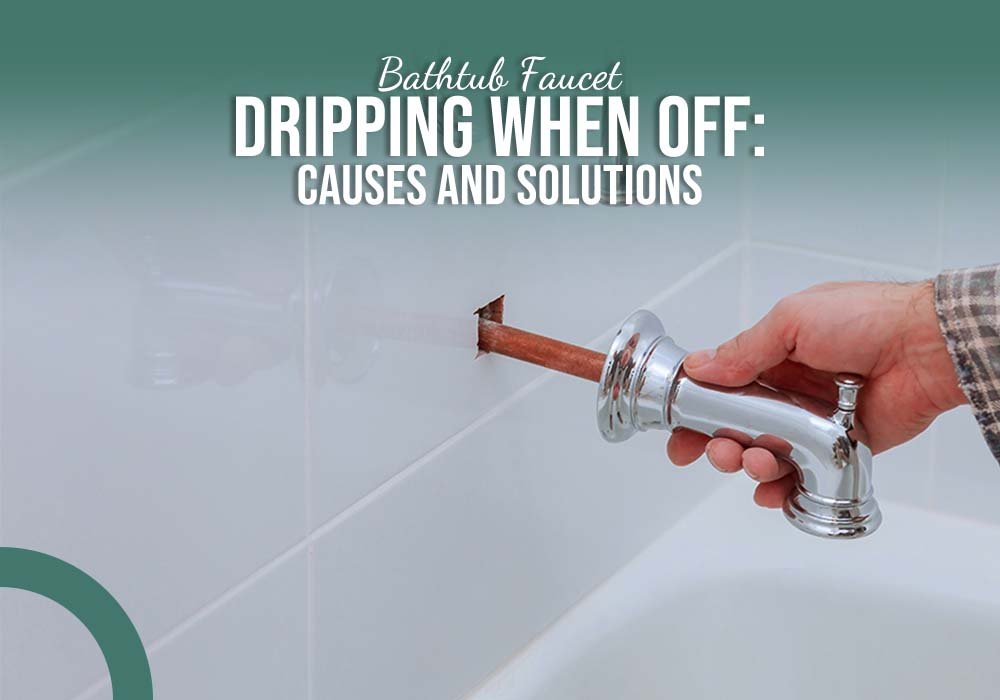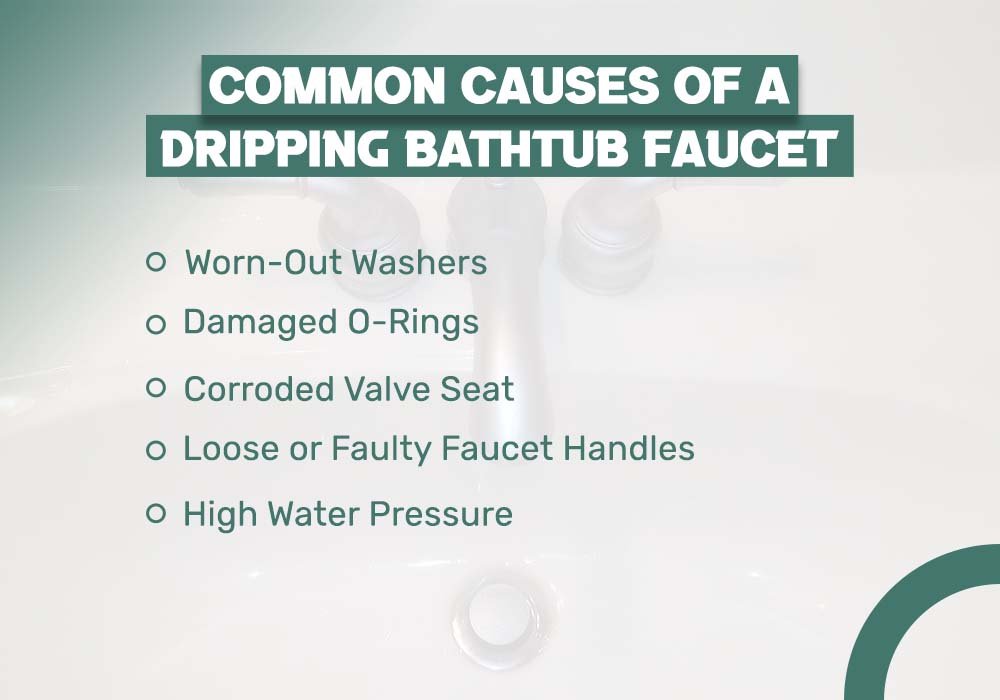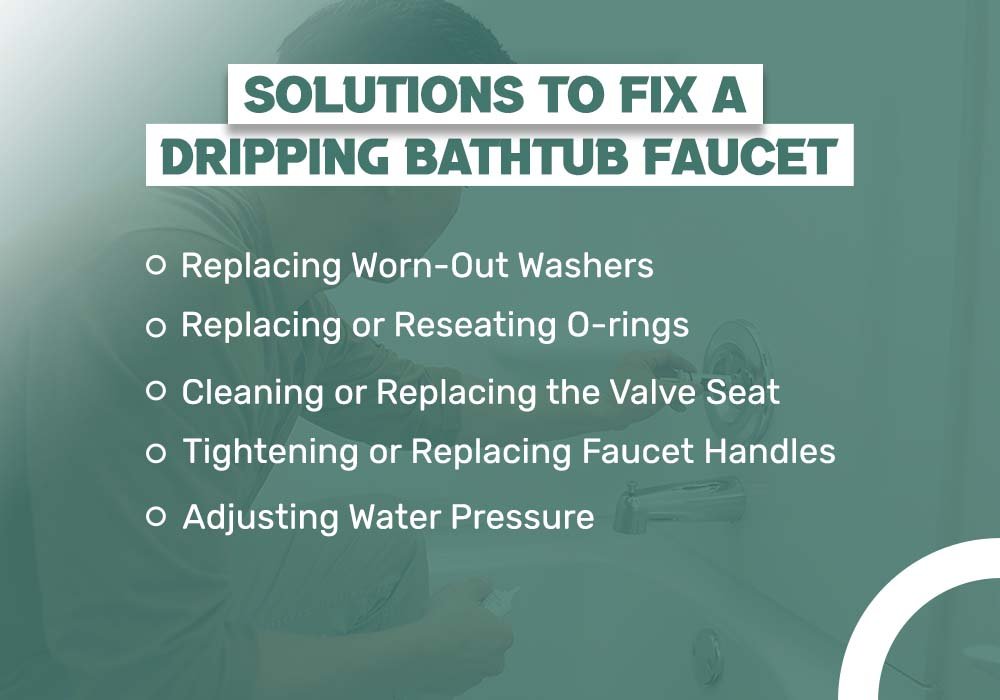Is your bathtub faucet leaking and driving you crazy with that constant drip? A leaking bathtub faucet isn’t just annoying; it can also lead to higher water bills and potential damage to your bathroom over time. You might be wondering, How to fix a leaky bathtub faucet with two handles quickly and effectively to stop the waste and restore peace to your home.
Don’t worry; fixing a leaking bathtub faucet is easier than you might think, and you can often handle it yourself with just a few tools and some basic know-how. In this guide, we’ll walk you through the common causes of a bathtub faucet leaking and provide simple solutions to get your faucet working properly again. If you’re considering a more cosmetic update, you might ask, Can I change only the bathtub faucet cover? Understanding these aspects will help you address the problem efficiently.

1. Common Causes of a Dripping Bathtub Faucet
There are a few common causes of dripping bathtub faucets:

Worn-Out Washers
One of the most common causes of a leaky bathtub faucet is worn-out washers. Washers are small rubber or plastic discs located inside the faucet that create a seal to prevent water from leaking. Over time, these washers can become brittle, cracked, or misshapen due to constant pressure and exposure to water. This wear and tear compromises their ability to form a tight seal, which can lead to water dripping from the faucet even when it’s turned off. If you’re planning a complete overhaul, you might want to know how to remove a bathtub faucet: Complete guide to do the job right.
The symptoms of worn-out washers are quite noticeable. If you find that your bathtub faucet is dripping continuously, even when it’s fully turned off, it’s likely due to a faulty washer. Addressing this issue is crucial, as a leaky bathtub faucet not only wastes water but can also increase your water bill.
Damaged O-Rings
Another frequent cause of a dripping bathtub faucet is damaged O-rings. O-rings are circular rubber seals that help prevent leaks by sealing the joints in the faucet. If these O-rings become damaged due to wear, age, or exposure to harsh chemicals, they can fail to perform their sealing function effectively. When this happens, water can seep through the gaps, causing leaks and persistent dripping.
If you notice water seeping around the faucet handle or pooling on the sink or tub surface, it’s a strong indication that the O-rings need attention. A leaky bathtub faucet resulting from damaged O-rings can be fixed relatively easily by replacing the affected seals.
Corroded Valve Seat
Corrosion of the valve seat is another common issue that can lead to a dripping bathtub faucet. The valve seat is the part of the faucet where the washer sits and forms a seal. Over time, mineral deposits from hard water can accumulate on the valve seat, causing it to corrode. This corrosion can create gaps where water can escape, resulting in a leaky faucet.
Symptoms of a corroded valve seat often include persistent dripping that continues even after the faucet is turned off. Additionally, you might notice water leaking around the base of the faucet. If you suspect corrosion is the culprit, addressing this problem promptly is essential.
Loose or Faulty Faucet Handles
Loose or faulty faucet handles can also contribute to water dripping from the faucet. If the handles are not tightened properly, they may fail to shut off the water flow completely.
This can lead to a constant trickle of water, especially when trying to turn the faucet off or on. Over time, the constant movement can also lead to wear on the internal components, exacerbating the problem.
Signs of this issue include difficulty in turning the faucet on or off or the handle feeling wobbly. If you find yourself adjusting the handle multiple times to stop the dripping, it’s time to inspect the handles and their mounting screws.
High Water Pressure
Excessive water pressure in your plumbing system can also result in a dripping bathtub faucet. When the water pressure is too high, it can cause water to escape from the faucet even when it’s turned off.
The symptoms of high water pressure may be intermittent, depending on water usage elsewhere in the home. You might notice that the dripping increases when other appliances, like washing machines or dishwashers, are in use. If you suspect that high water pressure is causing your leaky bathtub faucet, it’s advisable to check your water pressure levels.
A plumber can help you install or adjust a pressure-reducing valve, effectively stopping faucet dripping and preventing damage to your plumbing system.
2. Solutions to Fix a Dripping Bathtub Faucet
Solutions to fix the problems that come of leaking bathtub faucet:

Replacing Worn-Out Washers
To fix a dripping bathtub faucet caused by worn-out washers, first, turn off the water supply. Remove the faucet handle to access the washer. Replace the old washer with a new one, ensuring it’s the correct size. This will stop a water leak from the faucet and resolve the issue.
You’ll need a wrench, screwdriver, and replacement washers. This simple fix addresses common faucet leak causes and ensures that the faucet won’t drip after being turned off. If the bathtub faucet won’t stop leaking even after this, further troubleshooting might be necessary.
Replacing or Reseating O-rings
To fix a leaking bathtub faucet caused by damaged O-rings, first remove the faucet handle. Check the O-rings for signs of wear or damage.
Replace them with new ones that match the correct size. This simple repair will stop the water leak from the faucet effectively.
When choosing O-rings, ensure they are made of durable material to prevent future leaks. This method addresses common reasons for faucet leaks and is a key step in repairing a dripping bathtub faucet. If the faucet still drips after being turned off, additional inspection may be needed.
Cleaning or Replacing the Valve Seat
Cleaning the valve seat is a vital step in dripping faucet troubleshooting. Remove the faucet to access the valve seat and clean off any mineral deposits. If corrosion is present, consider replacing the valve seat to prevent water leaks from the faucet.
Using a water softener can prevent future corrosion, keeping the valve seat in good condition. This method answers the question, “What causes a faucet to drip when off?” and ensures the bathtub faucet won’t stop leaking after a proper repair.
Tightening or Replacing Faucet Handles
If your bathtub faucet is not shutting off properly, tighten the faucet handles. If tightening doesn’t fix the issue, consider replacing the handles. This will help stop a dripping faucet when turned off and resolve the problem efficiently.
Be cautious not to over-tighten the handles, as this can damage the faucet. This repair method is effective in addressing why the faucet still drips after being turned off, making it a simple yet essential solution for a leaking bathtub faucet.
Adjusting Water Pressure
High water pressure is a common cause of dripping faucets. To fix this, check your home’s water pressure with a pressure gauge. If it’s too high, adjust it by using a pressure-reducing valve. This will stop the faucet from dripping and prevent future issues.
If you’re unsure about adjusting water pressure, it’s advisable to call a professional plumber. This approach ensures a thorough fix for a dripping bathtub faucet and addresses the underlying cause. Proper pressure management is key to preventing water leaks from the faucet.
3. Preventive Maintenance Tips

There are a few additional tips to maintain your dripping faucet:
Regular Inspection
Regular inspections of your bathtub faucet are essential for early detection of wear and tear. Check for any signs of leaks or corrosion. This proactive approach can help you understand how to fix a dripping bathtub faucet before it escalates into a more significant problem. Catching issues early can save you time and money.
Water Softening
Installing a water softener can significantly benefit your bathtub faucet’s longevity. Hard water contains minerals that can lead to corrosion and buildup. By reducing mineral deposits, you not only maintain the functionality of your faucet but also make it easier to repair a dripping bathtub faucet when necessary.
Timely Repairs
Addressing small leaks promptly is crucial for preventing larger issues down the line. Ignoring a minor drip can lead to increased water bills and potential damage. If you’re unsure how to repair a dripping bathtub faucet, consider consulting a professional. Timely repairs can save you from more extensive repairs later on.
Conclusion
In conclusion, if your bathtub faucet is leaking, addressing the issue quickly is essential to prevent further damage and waste. Understanding how to fix a dripping bathtub faucet can save you both water and money. Whether it’s replacing worn-out washers or tightening loose handles, these solutions are often straightforward and manageable.
Don’t let a leaking bathtub faucet disrupt your peace, take action today to restore your bathroom’s functionality and efficiency!
FAQs
How can I tell if my bathtub faucet is leaking?
You can determine if your bathtub faucet is leaking by observing for visible water drips or pooling around the faucet base or tub. Additionally, if you notice an increase in your water bill without a corresponding increase in usage, it may indicate a hidden leak. Listen for constant dripping sounds when the faucet is turned off; this is often a clear sign of a leak.
Can I fix a dripping bathtub faucet myself, or should I hire a plumber?
Many homeowners can fix a dripping bathtub faucet themselves, especially if the problem is due to worn-out washers or damaged O-rings. Basic tools and replacement parts can often resolve these common issues. However, if you’re uncomfortable with DIY repairs or if the problem persists after your attempts, it’s advisable to hire a plumber for professional assistance.
What should I do if the dripping continues after I’ve made repairs?
If your bathtub faucet continues to drip after you’ve made repairs, check to ensure that the replacement parts were correctly installed and that they are the right size. If the faucet still leaks, it might be a sign of a more complex issue, such as high water pressure or a corroded valve seat. In this case, further investigation or professional help may be needed to diagnose and resolve the underlying problem.
